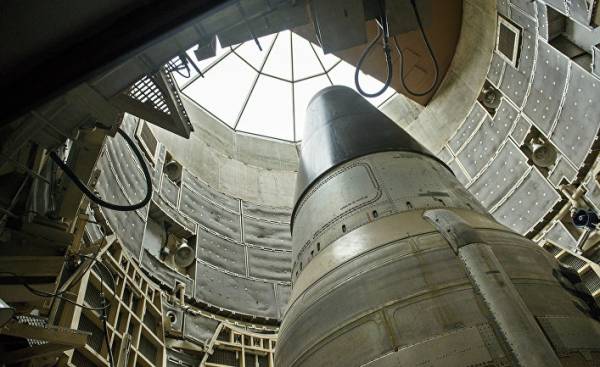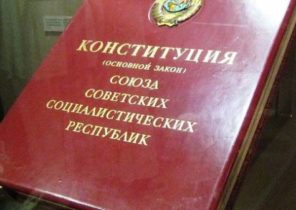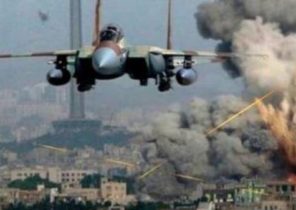
American creators of the weapons is approvingly Pat on the back for the exceptional capabilities of their new guidance system, turning the aging nuclear warheads in a surgically precise weapon. Recently, however, the analysis warns about the dangerous consequences. This new device, which quietly developed over two decades and currently is set to launched from American submarines ballistic missiles, making a small change in the height at which there is undermining of the warhead. The result is a significant increase in the probability that the target in the explosion is destroyed.
For Russia’s defensive radar which give warning of an attack using ballistic missiles for a small amount of time before approaching the target, this enhancement can amplify concerns that the United States is able to strike first and incapacitate placed in the mines Russian nuclear missiles before they are launched. This undermines nuclear deterrence and creates an “extremely destabilizing and dangerous situation in the field of strategic nuclear weapons,” says the report, published on 1 March the journal Bulletin of the Atomic Sciences.
Modernization of nuclear weapons detonator and detonation control can increase the tension, which is increased on several fronts. Earlier this month, officials of the United States confirmed that Russia has deployed its new missiles in violation of the Treaty on intermediate-range and shorter-range, that is, signed in 1987 an agreement that directly affects the interests of Europe. At the same time Russia is implementing a leak of information regarding his plans for the use of marine robotic bombs to attack American ports. And in December 2016 the Council for defence science Pentagon (Defense Science Board) recommended that to revive a small, low-power nuclear warheads, the destruction of which in the us Arsenal (but not in Russian) started in 1991 because they could lower the threshold of nuclear war.
Meanwhile, President Donald trump in December 2016, wrote on Twitter that the United States should “significantly expand its nuclear capability”. Trump suggested that the budget for 2018 was increased by 11% ($14.3 billion) financing related to the creation of weapons work in the National administration for nuclear safety (National Nuclear Security Administration).
This target change is part of a plan for managing the nuclear weapons Arsenal, which was launched ten years ago. The meaning of it is to support us nuclear deterrence without the need to develop and test new weapons. Many details of this regulation are confidential. However, an article published in the journal Bulletin of the Atomic Scientists, explains how the new “supermonitor”.
Shortly before the warhead reaches its target, this “supertravel” turns on its radar to determine the remaining distance on a ballistic trajectory, and this takes into account any deviation from the established route. The old technology included the detonation at a fixed height or about the lands; exchange errors could lead to a shift in the center of the explosion from the purpose. However, the new system adjusts the height of detonation so that the explosion produced a higher point, and thus it remains in the so-called “lethal zone”. Within this zone, as the authors of the article, the 100-kiloton warhead will destroy a fortified structure with a probability of 86%. “The public “do not see the revolutionary impact (this SuperDrives) on military capabilities”, the authors of this report.
To tell us more about this superspyware, Theodore Postol (Theodore Postol), a physicist and missile expert at the Massachusetts Institute of technology, has grouped the important details issued by the naval forces of the United States patent in 1976, and in 1984, that is when the idea first appeared. Hans Christensen (Hans Kristensen), Project Manager of nuclear information at the Federation of American scientists in Washington, D.C., have carefully analyzed the history of weapons, and political statements. And Matthew McKenzie (Matthew McKinzie), a nuclear physicist from located in Washington, D.C., Council for the protection of natural resources (Natural Resources Defense Council) examined this question from the point of view of mathematics.
This trio found new signs that U.S. political leaders realized the importance of correction when pointing warheads at the target. Christensen draws attention to a rare public debate in 1994 between the Ministry of defense and the U.S. Department of energy. He comes to the conclusion that the dismantling of the fuses with a fixed height on a typical U.S. warhead — the W76 100-kiloton warhead and installing the detonator with adjustable height of detonation will lead to the fact that these systems will be able to more effectively home in on a Russian rocket.
More alarming, according to the authors published in the journal Bulletin of the Atomic Scientists report, is that this supertravel makes it possible to use outdated W76 warheads for the destruction of “fortified targets” — such as highly protected missile silos. According to Postol, the direction of only two missiles with warheads W76 with supertravel and are aimed at rocket launching shaft would be sufficient for the destruction of the missiles.
Previously, only a more powerful warhead or a large number of W76 warheads could with a certain degree of probability to cope with this task. Thus, this provides supertravel American nuclear submarines a destructive force with a smaller number of warheads and greater flexibility to new opportunities. “It’s quite an amazing achievement,” says Christensen.
According to the estimates of the authors published in the journal Bulletin of the Atomic Scientists report, in late 2016, the American military industry has equipped these superstrictly 1200 out of a planned 1,600 W76 warheads. According to them, already “around 506” of them now available on submarines equipped with ballistic missiles. According to the authors of the report, 272 such boegolovki — two on each goal is able to destroy “all 136 located in the mines of the Russian Intercontinental ballistic missiles”. In the reserve still remain over a thousand of these warheads — as well as more powerful warheads with old fuses —for use against such targets as mobile missile launchers, command centers and located at a depth of bunkers. There is a possibility to hold a future upgrade hundreds more in stockpile warheads.
Although this analysis few references to government sources, he seems to be very convincing, says Philip Coyle (Philip E. Coyle III), the former head of the office for tests of the Pentagon, who currently works at the Center for arms control and non-proliferation (Center for Arms Control and Non-proliferation) in Washington, DC. Richard Garvin (Richard Garwin), a physicist from the IBM research center (Yorktown heights, NY), who for decades participated in the creation of weapons and control over them, said “reliable” this analysis.
However, Thomas Karako (Thomas Karako), senior researcher located in Washington, D.C., Center for strategic and international studies (Center for Strategic and International Studies in Washington), criticizes what he calls “the infinite language of newspaper revelations,” as well as concerns of the authors regarding the possibility to cause concern in Russia. Karako believes that the Russian government has violated or ignored not only the Treaty on intermediate-range and shorter-range, but also a number of other U.S.-Russian agreements, which were signed in the 1990-ies with the aim of destroying the nuclear weapons of short range. He calls it “a neurosis of the Western arms controllers” and attempt to block the improvement of its own technology.
Russians consider such technological progress as one of the many reasons to fear the intentions of the United States, says Christensen. As an example, he gives an angry speech delivered by Russian President Vladimir Putin last year to a group of journalists in St. Petersburg, Russia, in which he expressed dissatisfaction with the active development of nuclear weapons systems in all areas. “You, — Putin said, referring to the United States and its allies, no sense of impending danger, and that worries me”.
Eliot Marshall is a journalist specializing in science; he lives and works in Washington, DC.






